Blog
Best Gaming Monitors for High FPS and Low Latency By Compstuff
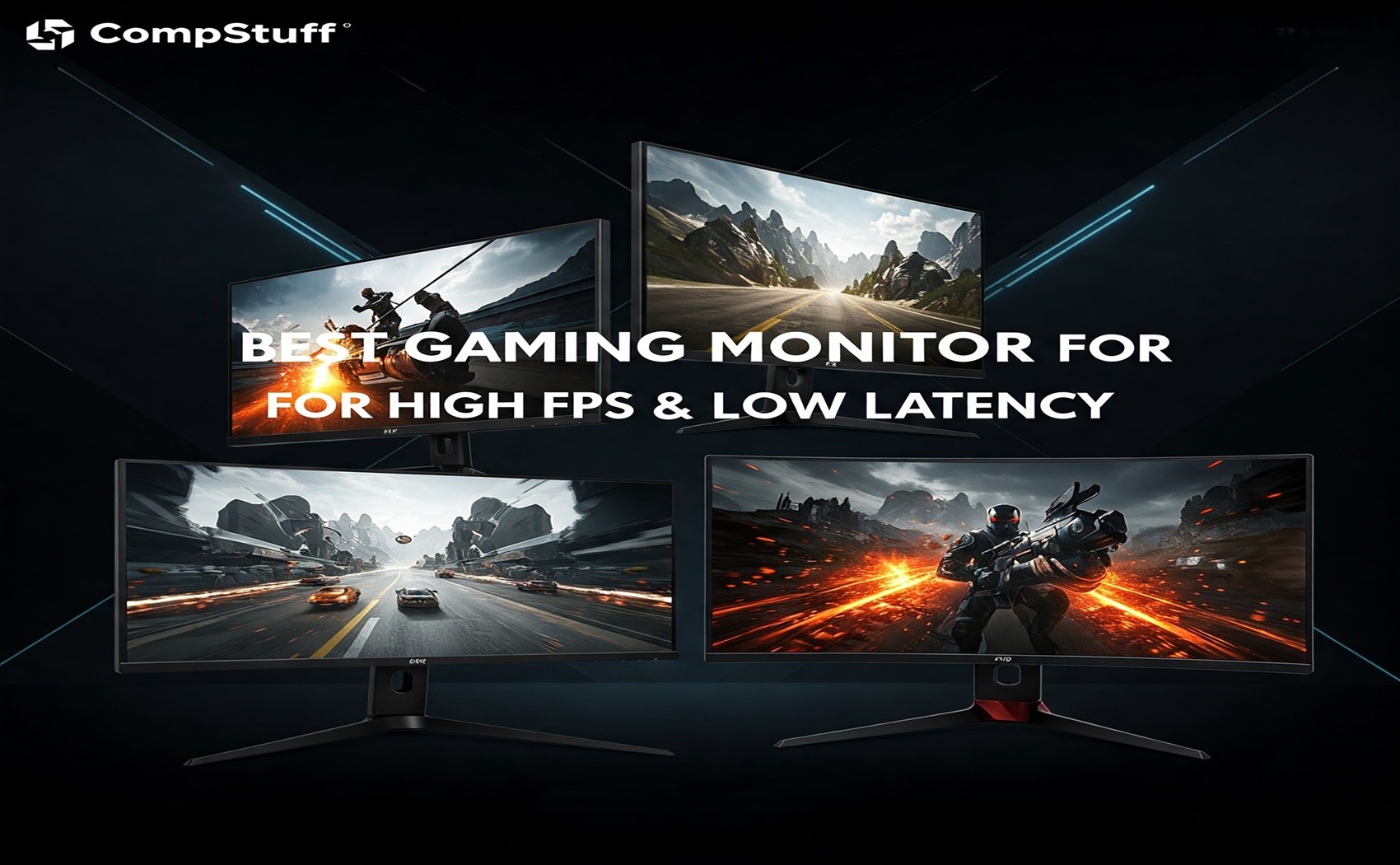
Introduction
For serious gamers, having a high-performance monitor can be the difference between victory and defeat. High FPS (frames per second) and low latency ensure smooth visuals, reduced screen tearing, and faster response times. Whether you’re an esports competitor or an immersive single-player enthusiast, investing in the right gaming monitor can elevate your gaming experience. In this guide, we’ll explore the best gaming monitors designed for high FPS and low latency, along with key features to look for when making a purchase.
Key Features to Look for in a Gaming Monitor
1. Refresh Rate (Hz)
The refresh rate determines how many times per second your screen updates. Higher refresh rates lead to smoother gameplay and a competitive edge.
- 144Hz: Standard for most gaming monitors.
- 240Hz: A great choice for fast-paced competitive gaming.
- 360Hz: Ideal for professional esports players.
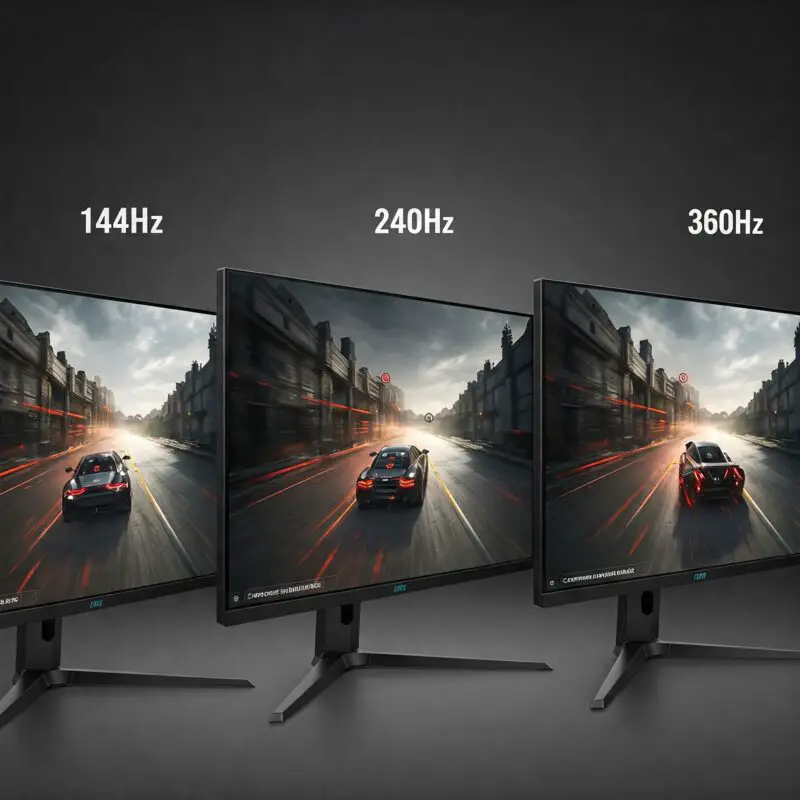
2. Response Time (ms)
Response time affects how quickly pixels change colors, reducing ghosting and motion blur.
- 1ms or lower: Best for fast-paced games.
- 3-5ms: Acceptable for casual gaming but not recommended for competitive play.
3. Input Lag
Lower input lag means faster reaction times in games. Look for monitors with below 5ms input lag for optimal performance.
4. Panel Types
- TN (Twisted Nematic): Fast response time but poor viewing angles.
- IPS (In-Plane Switching): Great colors and viewing angles, but slightly slower response.
- VA (Vertical Alignment): High contrast but can have ghosting issues.
- OLED: Best color accuracy, contrast, and response times, but expensive.
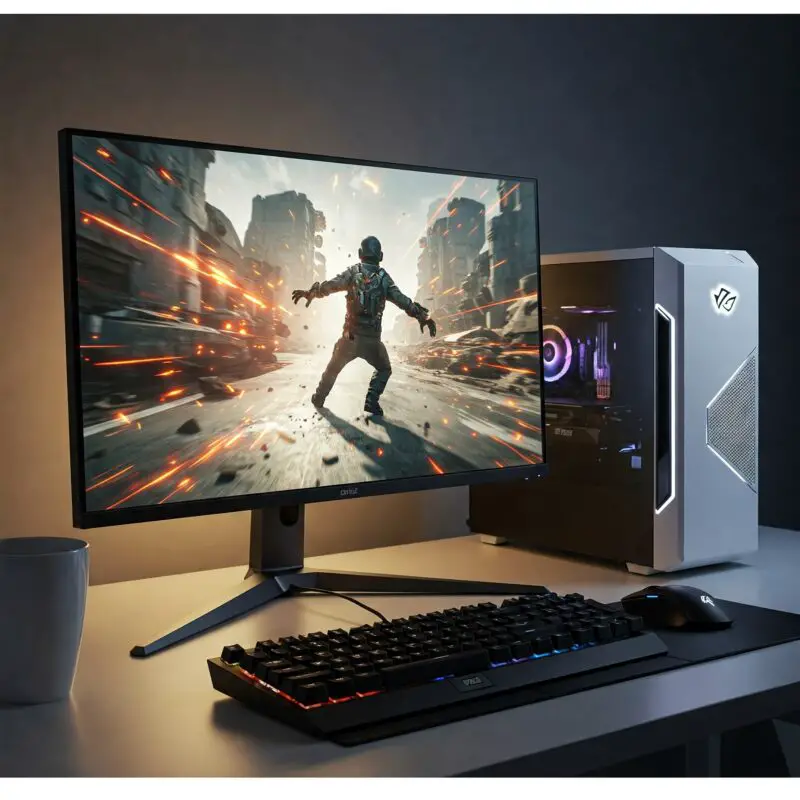
5. Adaptive Sync Technologies
- G-Sync (NVIDIA) and FreeSync (AMD) reduce screen tearing by synchronizing the monitor's refresh rate with the GPU’s frame rate.
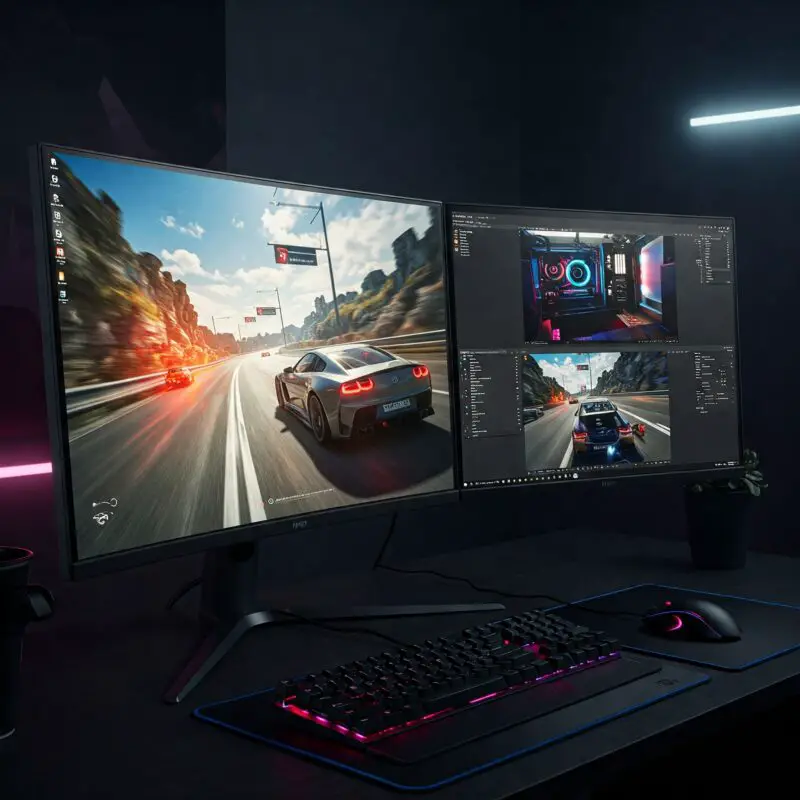
6. Resolution vs. Performance
- 1080p (Full HD): Best for high refresh rates and esports gaming.
- 1440p (2K): Great balance of visuals and performance.
- 4K (Ultra HD): Best for immersive visuals but requires powerful hardware.
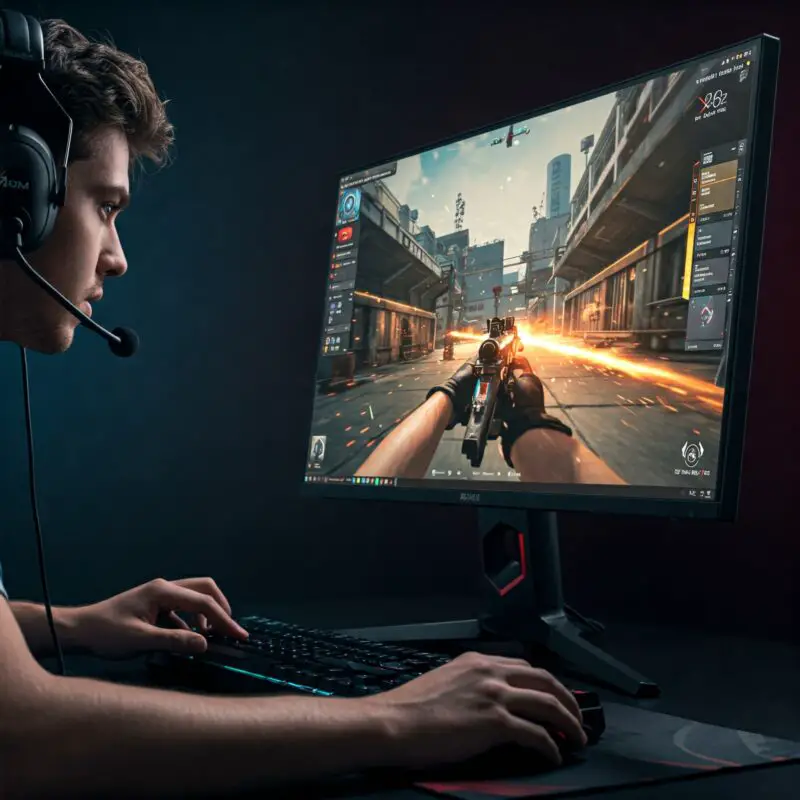
Top Gaming Monitors for High FPS and Low Latency
1. Best Overall: ASUS ROG Swift 360Hz PG259QN
- Refresh Rate: 360Hz
- Response Time: 1ms (GTG)
- Panel: IPS
- Features: G-Sync, ultra-low input lag
- Best for: Esports and competitive gaming
2. Best Budget: AOC 24G2 144Hz
- Refresh Rate: 144Hz
- Response Time: 1ms (MPRT)
- Panel: IPS
- Features: FreeSync, great color accuracy
- Best for: Budget gamers looking for solid performance
3. Best 1440p Option: Samsung Odyssey G7 240Hz
- Refresh Rate: 240Hz
- Response Time: 1ms (GTG)
- Panel: VA
- Features: G-Sync & FreeSync, curved display
- Best for: High refresh rate and better visuals
4. Best 4K for High FPS: Acer Predator XB273K
- Refresh Rate: 144Hz
- Response Time: 4ms (GTG)
- Panel: IPS
- Features: G-Sync, HDR support
- Best for: 4K gaming with smooth performance
5. Best OLED Option: Alienware AW3423DW
- Refresh Rate: 175Hz
- Response Time: 0.1ms (GTG)
- Panel: OLED
- Features: G-Sync Ultimate, ultra-low response time
- Best for: Vibrant colors and immersive gameplay
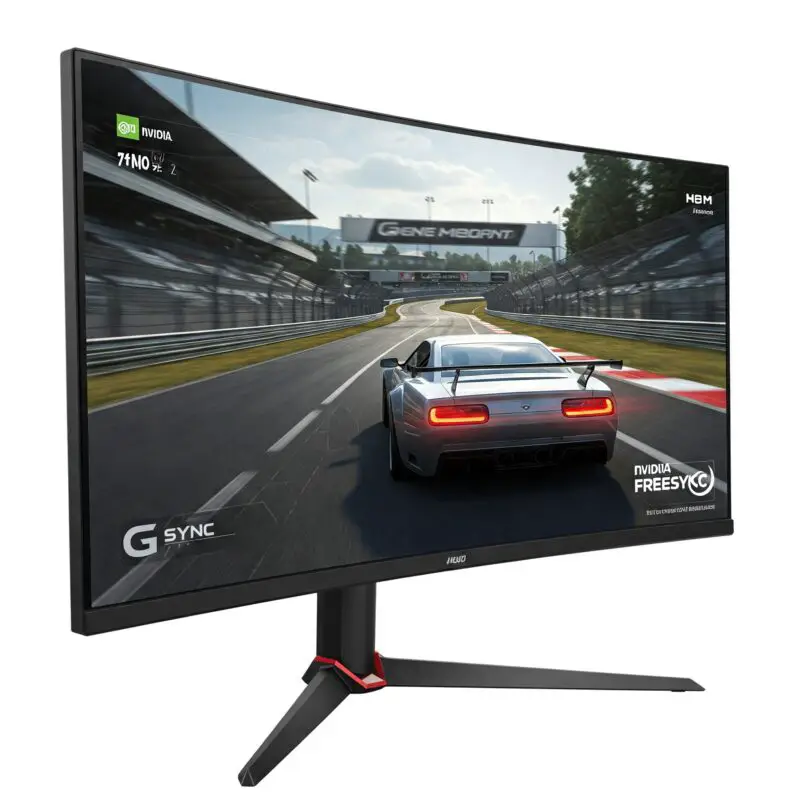
How to Choose the Right Monitor for Your Needs
Balancing Performance and Budget
- If you’re a competitive gamer, prioritize high refresh rates and low response times.
- If you prefer immersive visuals, go for higher resolutions and OLED panels.
- Budget-conscious gamers can find great options at 144Hz and 1080p without breaking the bank.
Best Monitor Based on Game Types
- FPS & Battle Royale: High refresh rate (240Hz+), low response time.
- RPG & Open-World: Higher resolution (1440p/4K) for immersive graphics.
- Casual Gaming: 144Hz or 165Hz with an IPS panel for better visuals.
Connectivity and Ergonomics
- Ensure your monitor has DisplayPort 1.4 or HDMI 2.1 for high refresh rates.
- Adjustable stands, VESA mounts, and blue light filters can improve comfort.
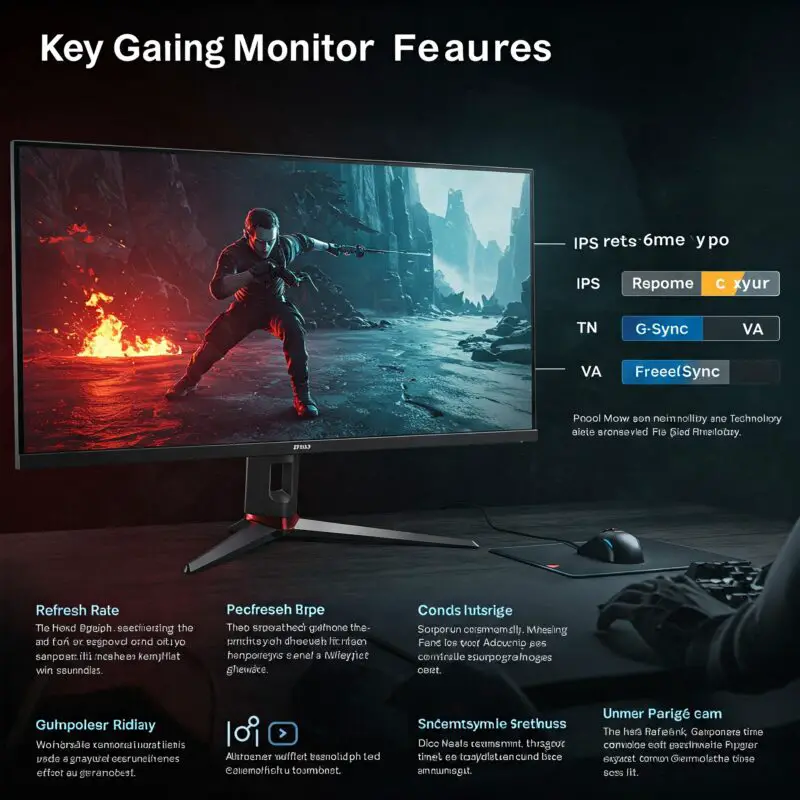
Final Thoughts
Picking the best gaming monitor depends on your priorities: high FPS, low latency, resolution, and budget. Whether you're an esports player aiming for the fastest response times or a casual gamer wanting stunning visuals, the right monitor can elevate your gaming experience.
What gaming monitor do you use? Let us know in the comments!
